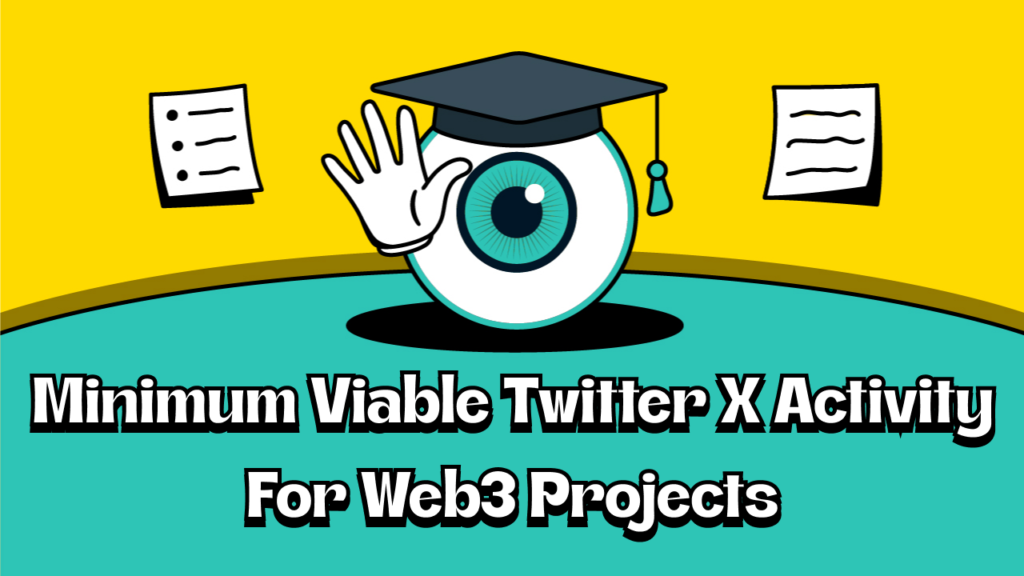
“I’m not in danger… I am the danger.” — Walter White, also known as Heisenberg (But also any anonymous member in the community)
A strong wave of FUD can kill a Web3 project. Many first-time builders have no idea how to manage it, and they make poor decisions. Read this guide now, and check it again whenever the community vibe starts to shift in the wrong direction.
This article is inspired by the insights from the book Token Titans by Tugan Bara. If you’d like to explore these strategies in depth, you can grab your copy: Token Titans : The Secret Playbook for Building New Web3 Experiences, NFT Communities, and DeFi Protocols
Understanding FUD: Fear, Uncertainty, and Doubt
Let’s discuss something that will happen sooner or later: FUD. It stands for fear, uncertainty, and doubt. FUD is an accumulation of anxiety and frustration in your community. It’s the step before the storm hits.
We apologize for the harshness of our words, but if you have experienced a FUD, you know that our description is mild compared to the madness that can occur.
Understanding the Causes of FUD in Crypto Marketing
FUDs can happen for many reasons. Most of them you don’t expect.
Common Causes of FUD:
🧱 Slow Progress: The project is not making enough progress fast enough.
🧱 Conspiracy Theories: There are rumors about the real intentions of the founders.
🧱 Lack of Communication: The team is not communicating enough with the community.
🧱 Roadmap Confusion: There is confusion regarding the roadmap or the introduction of new features or tokens in the ecosystem, especially if prior announcements and teasers were unclear.
🧱 Price Decline: The price of the token or NFT is going down amid confusion.
🧱 Whale Activity: Large holders (whales) are selling, and the price is dropping.
🧱 Founders Selling: Founders are selling their tokens; it doesn’t have to be much to create FUD.
🧱 Team Changes: The team is changing, or some members are leaving the project.
🧱 Security Issues: There is a hack or a major bug in the platform or smart contract.
The reasons are plenty. Managing a community means distinguishing the signal from the noise. Every day, some holders or community members will act negatively. That’s part of life. Maybe they have a bad day, or maybe they are acting out. All possibilities are on the table. Having a deep understanding of the types of holders will help you identify borderline behaviors.
Recognizing the Onset of FUD
The challenge is to know when a FUD is starting and spreading. Usually, it’s around one specific core issue. If you notice growing dissatisfaction or frustration around a particular topic, and this topic becomes a growing concern in the community, you might have the first signs of a FUD.
Also, the reaction of the community will tell you if it’s a FUD. If people who act normal on a daily basis start to give credit to the negativity and take part in it, you might have something that you should look at. If members who are usually positive are not defending the team, it might mean that they agree with the skeptics.
Mistakes to Avoid When Managing FUD in Web3 Marketing
Here is what you should not do: ignore angry people, ban the people spreading FUD, and continue business as usual.
This approach will make things worse. Banning more and more people will lend credibility to conspiracy theories. You might be seen as someone afraid of “the truth” and who has something to hide. It won’t work in your favor.
Don’t get us wrong—sometimes it’s okay to remove super toxic, useless, and irrational individuals who harm the project. But banning too many people who are raising concerns during an early FUD is bad. The worst you could do is to ban people who are moderately frustrated but still polite.

source: https://medium.com/blockchain-biz/what-the-fud-7642d6e21bd0
The Risk of Echo Chambers
Moreover, banned people might gather somewhere else, create their own Discord server or Telegram group, and go completely wild in their own echo chamber. We have experienced this in several projects. In these echo chambers, skeptics are even banning and blocking moderate voices, increasing the madness of the crowd.
Defamation campaigns, threats against founders and their families, and coordinated attacks can emerge from these groups.
Don’t underestimate the power of disgruntled individuals in large groups. Remember the wisdom of Gustave Le Bon quoted in the book Token Titans written by Tugan, a French psychologist who studied crowd behavior. In his book The Crowd: A Study of the Popular Mind, he explains how individuals can lose their sense of self and become part of a collective consciousness, which can lead to irrational and even dangerous behavior.
Effective Strategies for Managing FUD in Crypto Communities
Benjamin Franklin was right when he said, “An ounce of prevention is worth a pound of cure.” The following are a set of strategies that will help you avoid or at least mitigate a FUD.
Strategy No. 1: Build Strong Foundations with Transparency
First, you manage the FUD by having a strong foundation, especially regarding transparency. People will complain mostly about money, volatility, risk, the team, the team’s ability, and intentions. All this has to be put on the table at the beginning of the project. If it hasn’t been done enough, now is the time for the team to emphasize all this.
It’s not the time to make new promises. When a FUD starts, the promises of the founders sound like those of desperate politicians. It doesn’t work. And keep in mind that politicians are actually professionals when it comes to handling these situations. So focus on transparency.
Implementing Transparency:
🧱 Regular Updates: Provide consistent updates on the project’s progress. This can be through weekly newsletters, blog posts, or community meetings.
🧱 Open Communication Channels: Have open channels where community members can ask questions and receive answers promptly.
🧱 Financial Transparency: Be open about how funds are being used. If possible, provide detailed reports on expenditures and investments.
Strategy No. 2: Mobilize the Community
You put the focus on all the good things that have been achieved collectively as a community. Founders need to give credit to the team members and the community for all the things that have been done. The crowd has to feel the commitment of the team.
Keep in mind that skeptics are always a very vocal minority. The majority might still be on your side or on the brink of changing sides. You need to reassure the silent majority and encourage them to voice their satisfaction. Push them to engage with skeptics. After all, you’re all in this together, and Web3 is about decentralization.
Encouraging Positive Engagement:
🧱 Highlight Successes: Share stories of achievements, milestones, and positive developments.
🧱 Community Recognition: Acknowledge contributions from community members, moderators, and developers.
🧱 Incentivize Participation: Offer rewards or recognition for active participation and positive contributions.
Strategy No. 3: Address Concerns Directly in AMAs
Start an AMA (Ask Me Anything) session and invite the concerned members to raise their complaints. Always stay very polite but firm. Skeptics are not your enemies; they are concerned members of your community. Treat them with respect and address their arguments.
Before the AMA, ask your team to:
🧱 Gather All Complaints: Compile all the issues raised by the community.
🧱 Prepare Responses: Develop clear, honest answers for each point.
🧱 Provide Evidence: Collect data, statistics, and facts to support your responses.
During the AMA:
🧱 Stay Calm and Polite: Maintain a respectful tone throughout.
🧱Acknowledge Mistakes: If failures have happened, don’t dismiss them. Be honest about what went wrong.
🧱 Emphasize Learning: Remind the community that building in Web3 involves testing and making mistakes.
🧱 Invite Solutions: Ask skeptics how they think things should have been done.
Strategy No. 4: Support and Reward Your Moderators
FUD is always hard on the moderators because they are on the front line. Also, they are humans, and they might agree on some points with skeptics. You need to have regular meetings with moderators to give them talking points and arguments to answer the public. Listen to them, ask them how they feel, and seek their advice about how the project should communicate about the ongoing issues.
Valuing Your Moderators:
🧱Provide Support: Ensure moderators have the resources they need to manage the community effectively.
🧱 Open Communication: Create a safe space for moderators to express their concerns.
🧱 Offer Incentives: Consider bonuses, rewards, or recognition for their hard work.
Historical Lessons for Managing Web3 Communities and Preventing FUD
This is how countries avoid revolutions. In France, when a vast nationwide protest movement started with the “Yellow Vests” in 2018, the government gave bonuses to the police to keep them content. This, along with measures to address the protesters’ concerns, helped stabilize the situation.
Revolutions often happen when the forces meant to maintain order join the protest. Moderators are your community’s guardians. If they join the skeptics, it’s game over.
Maintaining Momentum After Addressing FUD
Once you’ve addressed the FUD, it’s crucial to keep the positive momentum going.
Maintain regular updates with your community. Transparency should be an ongoing commitment, not just during crises.
🧱 Weekly Updates: Share what the team has accomplished each week.
🧱 Roadmap Progress: Update the community on milestones reached and what’s next.
🧱 Community Feedback: Encourage ongoing feedback and suggestions.
Keep an eye on community sentiment across all platforms.
🧱 Set Up Alerts: Use tools to monitor mentions of your project.
🧱 Engage Quickly: Respond promptly to concerns or misinformation.
🧱 Adapt Strategies: Be willing to adjust your approach based on feedback.
Encourage the community to take part in decision-making processes.
🧱 Surveys and Polls: Use these tools to gauge opinions on potential features or changes.
🧱 Community Projects: Support initiatives started by community members.
🧱 Open Development: If possible, make parts of your project’s development open-source.
Conclusion
🧱 Transparency Is Crucial: Be open about your project’s intentions, progress, and challenges.
🧱 Community Is Strength: Mobilize your supporters to foster a positive environment.
🧱 Address Issues Directly: Use AMAs to confront concerns head-on with respect and confidence.
🧱 Support Your Team: Keep your moderators and team members informed, appreciated, and motivated.
🧱 Leverage Marketing Experts: Collaborate with Web3 influencers, crypto marketers, and nft marketers to enhance your messaging.
If you want to dive deeper into the strategies behind Web3 marketing. You can grab your copy: Token Titans : The Secret Playbook for Building New Web3 Experiences, NFT Communities, and DeFi Protocols





